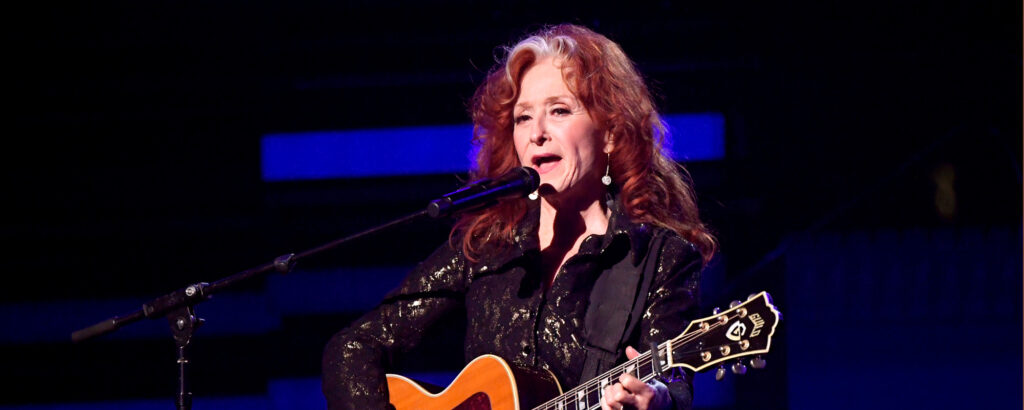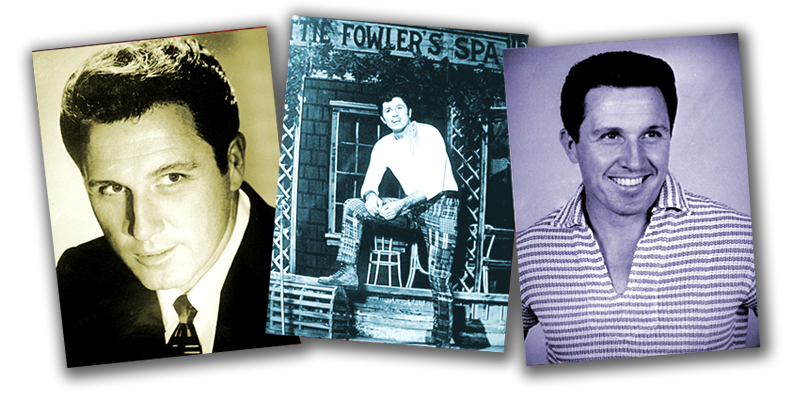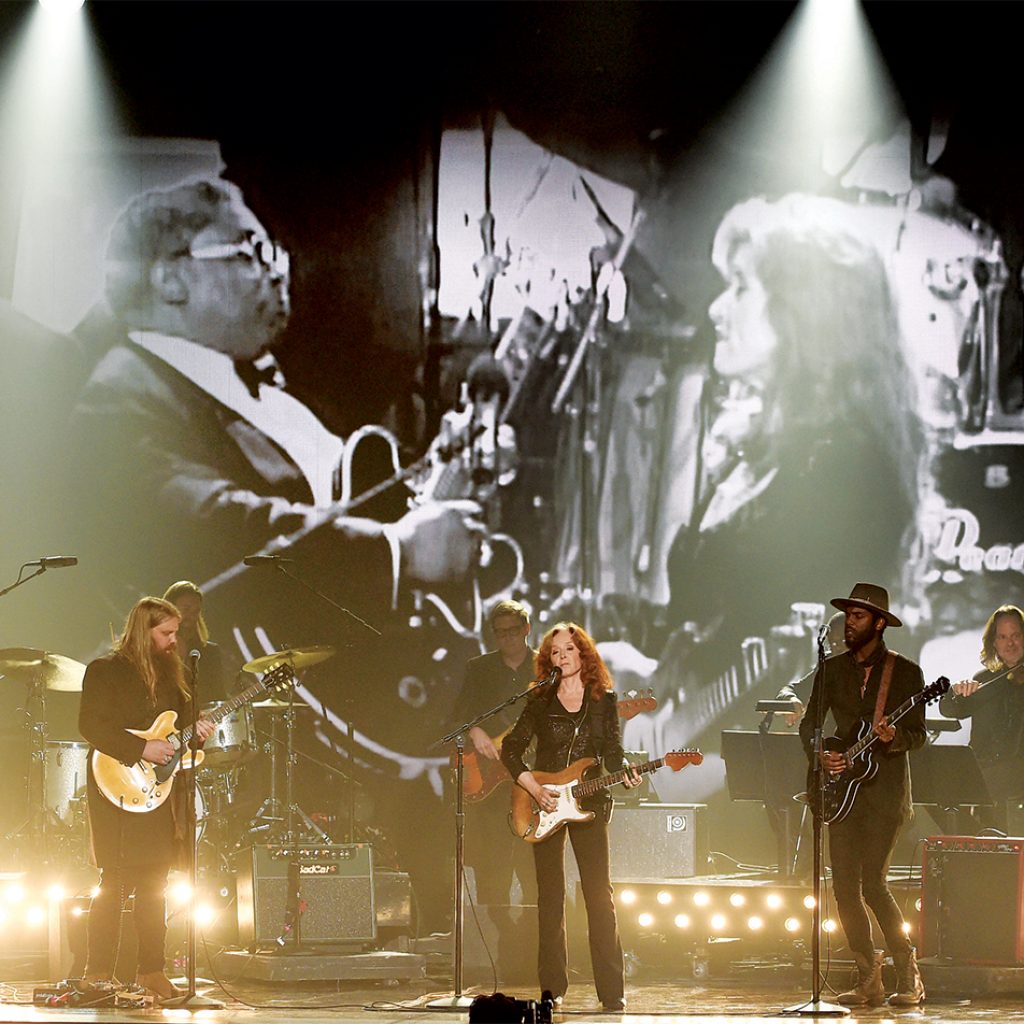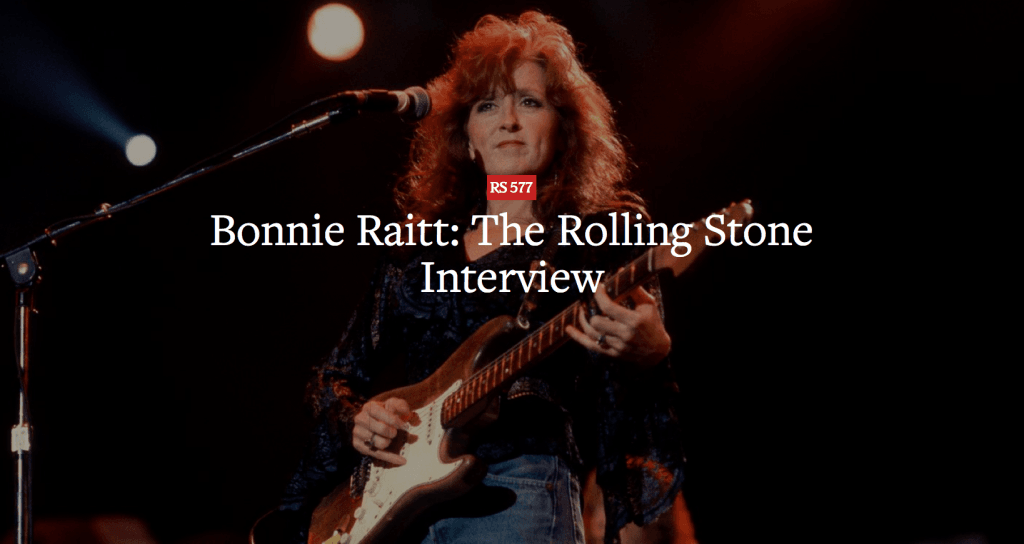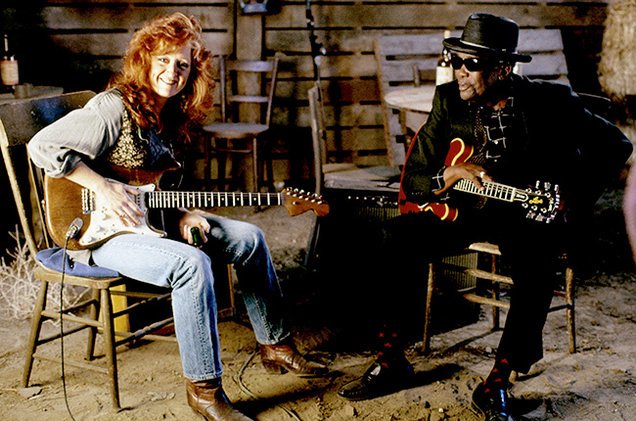
In the black and white photo, Bonnie Raitt stands alone by a pond, her hands stuffed casually into the pockets of her trench coat. She smiles slightly for the camera, her face framed by waves of long hair.
At the time, nothing in particular stood out in the Parisian scene, documented by Dick Waterman in the fall of 1970.
Yet, the photo offers a rare glimpse of Raitt at 20 years old, a year before she began a professional music career that would, in time, propel her to stardom. “People who remember Bonnie like that (photo), because she’s so young and it’s a very different photo of the Bonnie Raitt they know from recent fame,” Waterman said.
Waterman, a blues photographer, keeps in his Oxford home dozens of candid photos he shot of Raitt. They span several decades, from the start of their friendship in 1968 through the years he acted as her manager. “She’d be a professor in an English department right now if it wasn’t for Dick,” said legendary Memphis producer Jim Dickinson with a chuckle.
The nine-time Grammy Award winner and Rock and Roll Hall of Fame inductee will perform with Keb’ Mo’ at Thalia Mara Hall on Tuesday. While many fans know Raitt as an American musical tour de force, Waterman simply knows her as his one-time girlfriend and still close friend, Bonnie.
“My relationship with Bonnie is cordial and tight,” Waterman said. They met through a mutual friend when she was 18 and attending Radcliff at Harvard University. She was already deeply immersed in folk and blues music. “She came over and then we started to hang out together and a couple of months later, I moved to Philadelphia (Pa.) and she moved with me,” Waterman said.
In addition to her talent on guitar, Raitt’s Quaker background, Waterman said, “made her predisposed to like (blues) music before she was ever surrounded by it. “She was politically receptive to it. It’s not like she suddenly looked around and said ‘I want to do this.’ ” In Waterman’s company, Raitt found herself surrounded by blues giants from Muddy Waters to John Lee Hooker and Son House.
“They were always eager to pass it on,” said Dickinson, referring to their knowledge. “They were pleased enough when it was a boy, but imagine what it was like for this 19-year-old girl from Harvard to pick up a bottle-neck guitar and play the Catfish Blues! It opened a lot of doors for her.” Even Raitt has again and again acknowledged the legends’ influence on her style.
“I’m certain that it was an incredible gift for me to not only be friends with some of the greatest blues people who’ve ever lived, but to learn how they played, how they sang, how they lived their lives, ran their marriages and talked to their kids,” Raitt said on her official Web site. “I was especially lucky as so many of them are no longer with us.”
Raitt took a special liking to legendary bluesman Mississippi Fred McDowell and began opening his shows at clubs around the Northeast. It wasn’t long before record labels began catching wind of Raitt’s talent. “As soon as Warner Brothers expressed an interest in her, she knew that’s where she wanted to be,” Waterman said.
Raitt kept her self-titled debut album blues-heavy, but began to move into a more contemporary folk rock sound soon after. During the next seven years, she would record six more albums, with Waterman manning the helm of her schedule. “I found her dates and things like that,” Waterman said. “We always made sure she could do benefits and play on other people’s albums.” After managing the careers of Raitt and many other performers, Waterman retired to Oxford in 1986 and left his business relationship with Raitt behind.
By that time, Raitt had had notable commercial success, but it wasn’t until years later, when she signed with Capitol Records that she achieved new levels of critical acclaim and popularity. Fan-favorite singles such as Something to Talk About, I Can’t Make You Love Me and Love Sneakin’ Up on You only helped Raitt’s sound evolve into the pop-rock genre it fits today.
“Largely due to the fact that she’s female, she’s been able to transcend the genre and get across to the pop music community,” Dickinson said. “Believe me, it’s not easy. Few people have ever done that. That separates the men from the boys, so to speak.” Still, the shift Raitt made from gritty blues to a more mainstream sound never affected her relationship with her fan base or the longevity of her career, much like that of James Taylor or Paul Simon, Waterman said. “She’s carried those fans with her,” Waterman said.
Raitt also has remained true to her roots by working with various blues artists and inviting some of them to open tour dates or share the spotlight with her. “As you get bigger, you develop an entourage, and layers of people between you and the public,” Waterman said. “Well, Bonnie has remained … constant and consistent. Of all the intentions and goals and promises a musician makes earlier on, she is one of few who has remained true.”













 Visitors Today : 104
Visitors Today : 104 Now Online : 0
Now Online : 0






